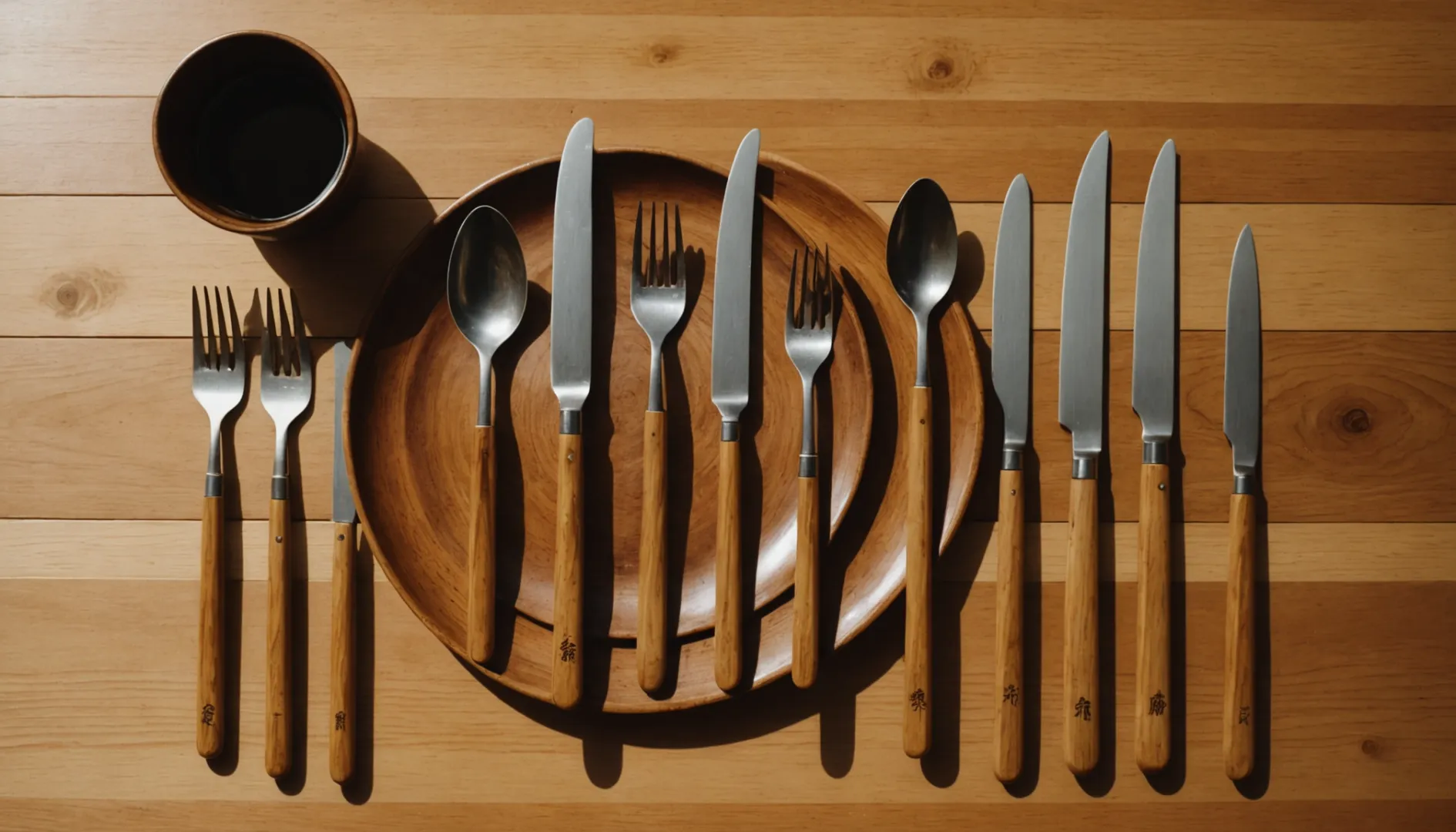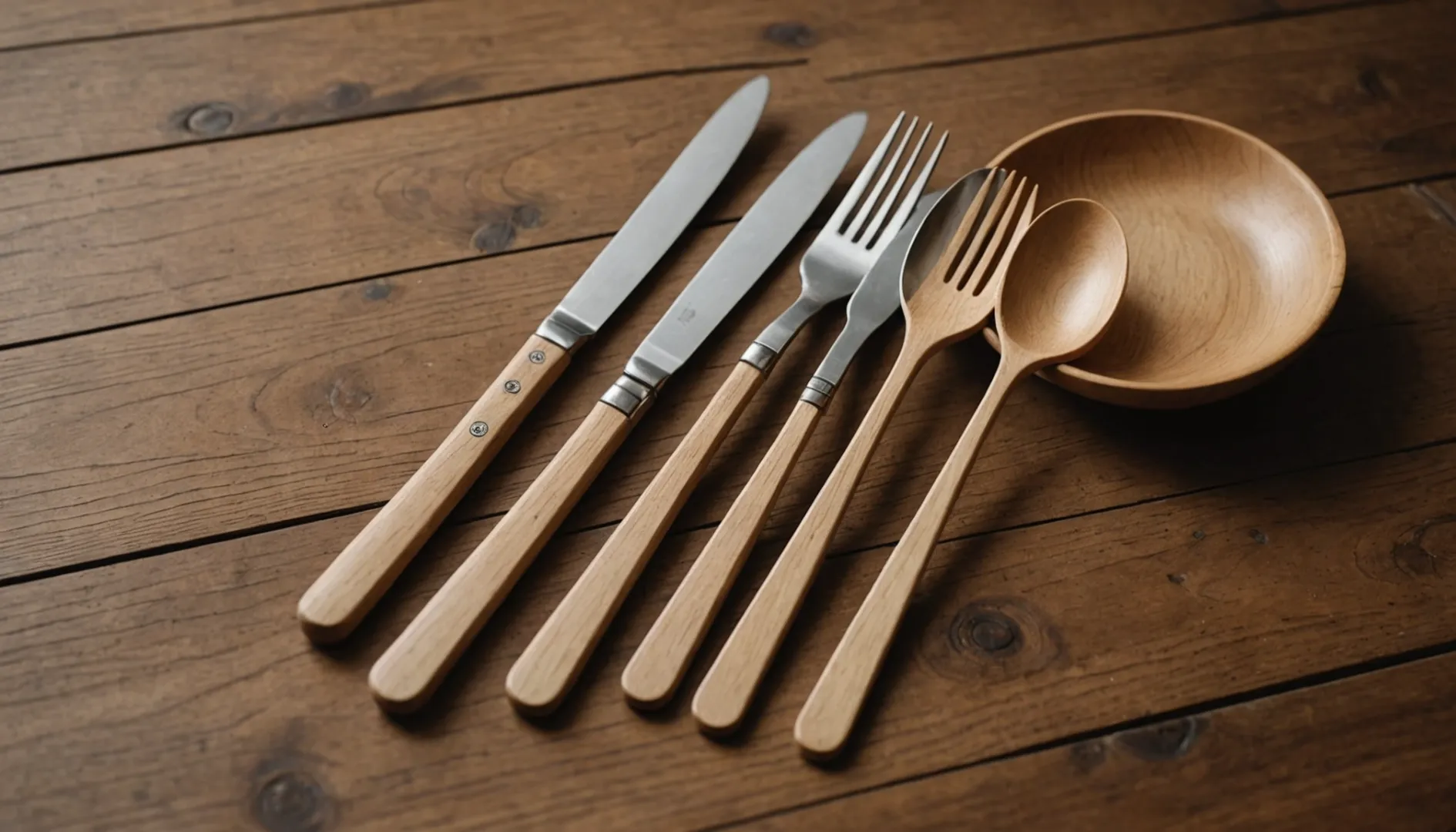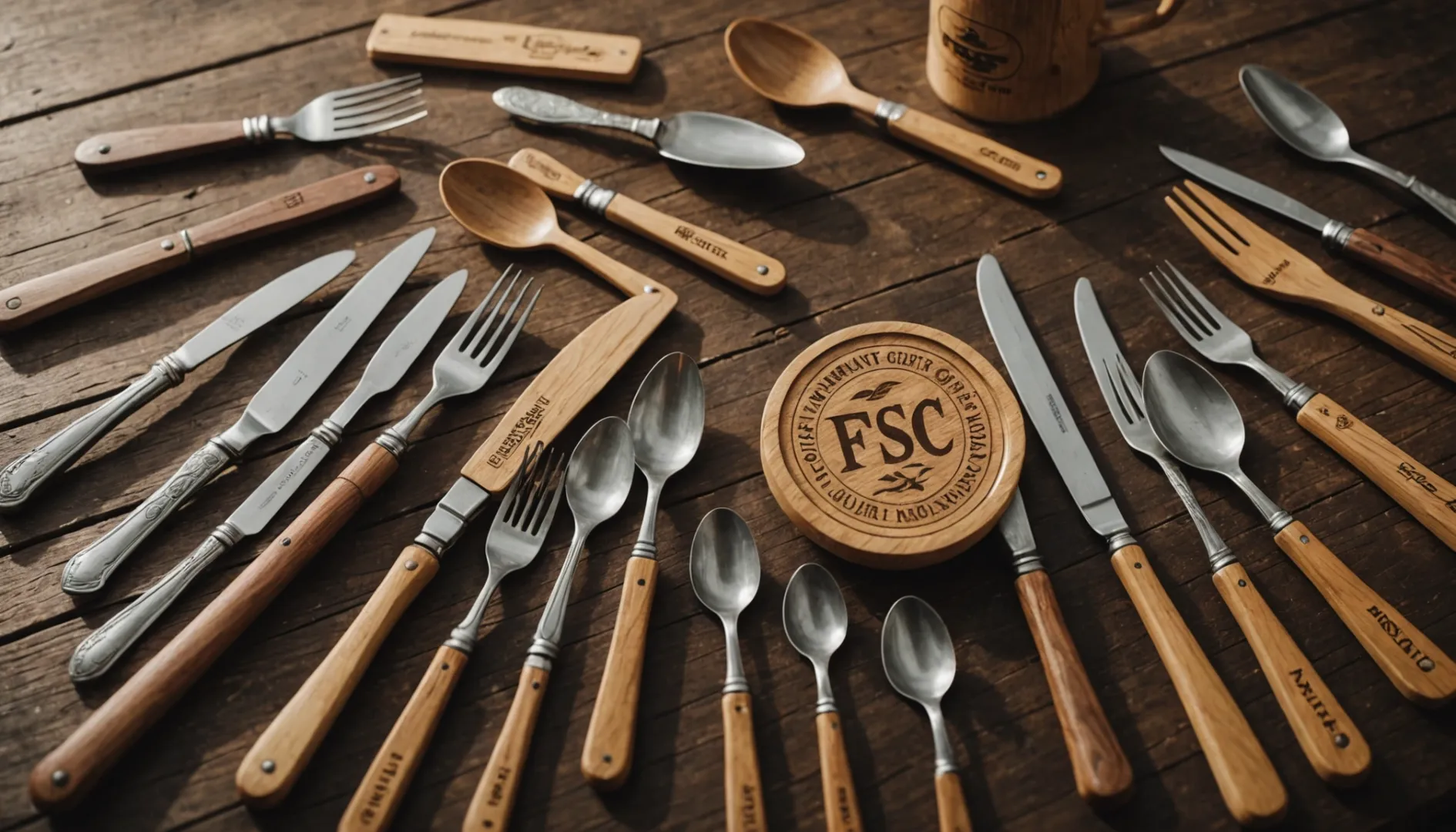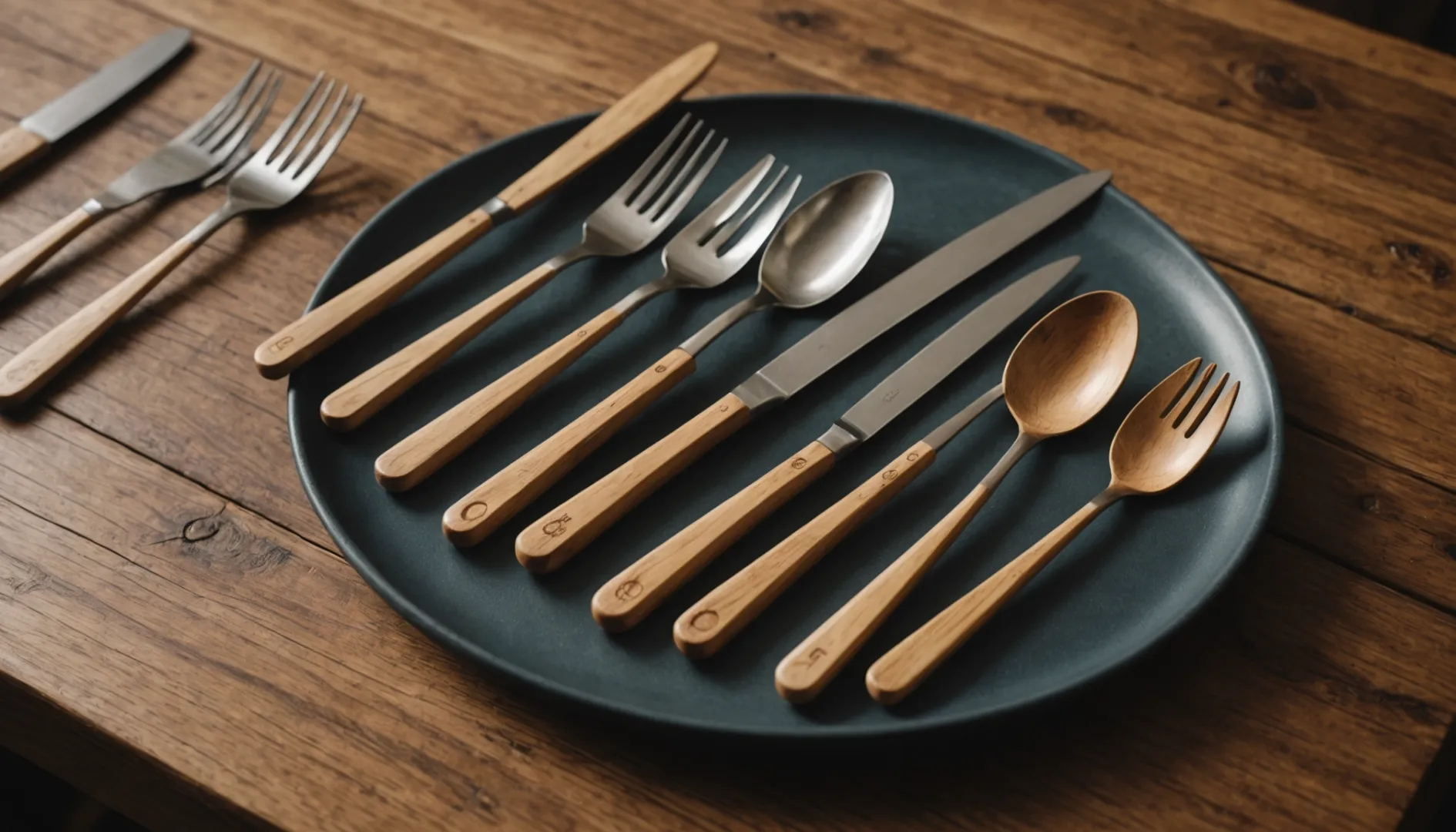
Imagine dining with utensils that not only serve your meal but also serve the planet. That’s the magic of wooden cutlery!
China is home to several leading manufacturers of wooden cutlery known for their commitment to quality and sustainability. Top companies include XYZ Eco-Products, GreenCutlery Co., and BambooWare, which offer innovative, biodegradable solutions for global markets.
But there's so much more than meets the eye! Let's explore the innovations and practices that make these companies stand out in a world increasingly focused on eco-friendliness.
Chinese wooden cutlery manufacturers prioritize sustainable sourcing.True
Chinese manufacturers use wood from responsibly managed forests, ensuring eco-friendliness.
What Makes Chinese Wooden Cutlery Manufacturers Stand Out?
Chinese manufacturers have carved a niche in the wooden cutlery industry with their unique blend of innovation, quality, and eco-conscious practices. What exactly sets them apart in this competitive landscape?
Chinese wooden cutlery manufacturers excel in sustainability, quality control, and innovative designs. They use responsibly sourced materials, apply advanced manufacturing techniques, and adopt eco-certifications to ensure superior products. This positions them as leaders in the global market for eco-friendly dining solutions.

Commitment to Sustainability
Chinese manufacturers prioritize sustainable sourcing1 of raw materials, often opting for woods harvested from responsibly managed forests. This practice not only supports environmental conservation but also appeals to the growing demand for eco-friendly products. By ensuring that their materials are biodegradable and free from harmful chemicals, they maintain a competitive edge in markets like Europe and North America.
Advanced Manufacturing Techniques
To enhance the durability and hygiene of their products, these manufacturers employ advanced processing methods. This includes the application of natural coatings like beeswax or plant oils, which protect against moisture absorption and bacterial growth. Some companies are exploring innovative coatings that further enhance biodegradability.
Innovation in Design
Innovation is another hallmark of Chinese manufacturers. By adopting minimalist designs that reduce material usage without sacrificing durability, they achieve cost efficiency and environmental benefits. Additionally, some manufacturers integrate materials like bamboo fiber to create lightweight yet robust utensils. This focus on resource efficiency aligns with tightening regulations on single-use items.
| Feature | Description |
|---|---|
| Sustainable Sourcing | Use of wood from responsibly managed forests, ensuring eco-friendliness. |
| Natural Coatings | Application of food-safe oils and waxes to enhance hygiene and longevity. |
| Minimalist Design | Reducing material usage while maintaining strength and functionality. |
Adoption of Eco-Certifications
Eco-certifications like FSC (Forest Stewardship Council) and FDA approvals are crucial for credibility in global markets. These certifications affirm that products meet strict environmental and safety standards. By obtaining such certifications, Chinese manufacturers not only establish trust but also gain access to regions with stringent regulations.
Transparency and Traceability
Manufacturers are increasingly adopting technologies like blockchain to ensure transparency in their supply chains. This technology tracks the journey of wood from forests to finished products, providing consumers with verifiable information about product origins.
By focusing on these areas, Chinese manufacturers distinguish themselves as leaders in the sustainable wooden cutlery market, catering to a diverse range of consumers who value both quality and environmental responsibility.
Chinese cutlery uses only responsibly sourced materials.True
Chinese manufacturers prioritize sustainable sourcing, using eco-friendly woods.
Chinese wooden cutlery lacks eco-certifications like FSC.False
They obtain eco-certifications to meet global environmental standards.
How Do These Companies Ensure Sustainability in Their Products?
Discover how top Chinese wooden cutlery manufacturers maintain sustainability through responsible sourcing, innovative design, and eco-certifications.
Chinese wooden cutlery manufacturers ensure sustainability by sourcing materials responsibly, utilizing eco-friendly coatings, and achieving certifications like FSC and LCA. These practices help reduce environmental impact while maintaining product quality and durability.

Responsible Sourcing of Materials
To ensure sustainability, leading Chinese manufacturers prioritize sourcing wood from responsibly managed forests2. This involves collaborating with suppliers who adhere to sustainable forestry practices, ensuring that the wood is harvested legally and ethically. Such practices not only preserve biodiversity but also maintain the ecological balance of forest ecosystems.
Eco-Friendly Coatings and Treatments
Many manufacturers apply natural coatings such as beeswax or plant oils to their wooden cutlery. These coatings enhance the utensils' durability and resistance to moisture and bacterial growth. The choice of non-toxic, biodegradable coatings aligns with the sustainable goals3 of reducing chemical waste and promoting consumer health.
Certifications and Environmental Standards
Certifications play a pivotal role in validating the sustainability of wooden cutlery. The Forest Stewardship Council (FSC) certification ensures that products come from responsibly managed forests. Additionally, Life Cycle Analysis (LCA) helps companies assess the environmental impact throughout the product's lifecycle, from production to disposal.
| Certification | Description |
|---|---|
| FSC | Ensures wood is sourced sustainably |
| LCA | Analyzes environmental impact across product lifecycle |
Adhering to these standards not only boosts consumer trust but also positions companies favorably in markets with stringent environmental regulations.
Innovation in Design and Material Use
Chinese manufacturers are at the forefront of innovation in wooden cutlery design. By adopting a minimalist approach, they minimize wood usage without compromising on durability. Some companies are experimenting with compostable coatings4 and integrating bamboo fibers for enhanced strength, ensuring the products break down quickly after disposal.
Transparency and Traceability
Technological advancements like blockchain are being used to enhance transparency in the supply chain. By providing verifiable data on the origin of wood materials, manufacturers build trust with consumers concerned about ethical sourcing. This traceability5 initiative aligns with the growing demand for product transparency and accountability.
Consumer Education on Product Care
Manufacturers also focus on educating consumers about proper care to extend the lifespan of wooden cutlery. Providing guidelines on regular oiling and safe cleaning practices helps maintain both functionality and hygiene. This proactive approach not only supports sustainability but also enhances user experience, making wooden cutlery a more appealing choice for environmentally conscious consumers.
Chinese manufacturers use beeswax on wooden cutlery.True
Beeswax is applied for durability and moisture resistance.
FSC certification ensures illegal wood sourcing.False
FSC ensures legal, sustainable forest management.
What Certifications Do Leading Manufacturers Hold?
Navigating the world of wooden cutlery involves understanding the certifications that manufacturers adhere to, ensuring quality and sustainability.
Leading manufacturers of wooden cutlery often hold certifications like FSC, FDA, and LFGB. These certifications ensure that the products are sourced responsibly, safe for food contact, and meet stringent quality standards, thus reinforcing consumer trust and supporting sustainable practices.

Ensuring Responsible Sourcing with FSC Certification
The Forest Stewardship Council (FSC) certification is pivotal for manufacturers aiming to demonstrate their commitment to sustainable forestry practices. This certification ensures that the wood used in cutlery production is sourced from forests managed responsibly, balancing social, environmental, and economic needs. Companies like XYZ Eco-Products6 often highlight their FSC certification to appeal to eco-conscious consumers who prioritize environmental responsibility.
Food Safety Standards: FDA and LFGB
Food safety is a paramount concern for consumers and manufacturers alike. The Food and Drug Administration (FDA) and Lebensmittel- und Futtermittelgesetzbuch (LFGB) certifications are essential for manufacturers to assure customers of their products' safety in contact with food. These certifications evaluate the materials and coatings used in cutlery, ensuring they are non-toxic and do not leach harmful substances. For instance, GreenCutlery Co.7 proudly displays their FDA and LFGB certifications, providing a competitive edge in markets with stringent health regulations.
Life Cycle Analysis for Sustainable Production
Life Cycle Analysis (LCA) is an increasingly popular method among leading manufacturers to assess the environmental impact of their products throughout their lifecycle—from raw material extraction to disposal. By employing LCA, companies can identify areas for improvement in energy consumption and waste reduction. BambooWare8 has integrated LCA into their production process, showcasing transparency and commitment to reducing their carbon footprint, which resonates well with environmentally conscious markets.
The Role of ISO Certifications in Quality Management
ISO certifications play a crucial role in ensuring quality management systems are in place across manufacturing processes. ISO 9001, for example, helps manufacturers maintain consistent quality by adhering to standardized management practices. This certification can significantly enhance customer satisfaction by ensuring product reliability and quality consistency. Many top-tier manufacturers leverage ISO certifications to strengthen their brand's reputation as leaders in quality assurance.
By holding these key certifications, leading wooden cutlery manufacturers not only meet regulatory requirements but also build trust with consumers who are increasingly demanding sustainable and safe products.
FSC certification is crucial for sustainable forestry.True
FSC ensures wood is sourced from responsibly managed forests.
ISO 9001 certification is irrelevant to quality management.False
ISO 9001 ensures consistent quality through standardized practices.
How Are Innovations Shaping the Future of Wooden Cutlery?
In an era where sustainability and functionality are paramount, innovations in wooden cutlery are transforming how we dine with eco-friendly utensils.
Innovations in wooden cutlery focus on enhancing sustainability, durability, and hygiene. New materials, coatings, and designs are driving improvements, making wooden utensils more appealing and practical for modern use.

Enhanced Materials and Coatings
The shift towards eco-friendly materials9 is at the forefront of wooden cutlery innovation. Manufacturers are exploring combinations of wood with bamboo fibers or other plant-based materials to enhance strength while maintaining biodegradability. This fusion not only offers improved durability but also reduces the material cost and environmental impact.
Moreover, advancements in coatings have significantly enhanced the functionality and safety of wooden cutlery. Natural oils and waxes remain popular; however, some companies are developing food-safe, compostable coatings that improve moisture resistance without compromising biodegradability.
Technological Innovations in Manufacturing
The production process of wooden cutlery is evolving with the integration of technology to ensure precision and minimize waste. CNC machining and laser cutting are becoming standard practices, allowing manufacturers to produce intricate designs with minimal material wastage.
These technologies enable the creation of ergonomic designs that cater to diverse consumer preferences and add a touch of elegance to everyday dining experiences. Additionally, this precision manufacturing leads to consistent product quality, bolstering consumer trust in wooden cutlery.
Sustainability and Lifecycle Improvements
Life Cycle Analysis (LCA) is becoming an essential tool for manufacturers who aim to quantify the environmental benefits of their products. By assessing every stage of a product's life—from raw material extraction to disposal—companies can identify areas for improvement and innovate accordingly.
For instance, some brands are focusing on traceable supply chains through blockchain technology to guarantee the sustainable sourcing of their wood. This transparency not only ensures compliance with global environmental standards but also appeals to eco-conscious consumers.
Design Innovations for Better Usability
The design of wooden cutlery is also seeing notable advancements, with a focus on both aesthetics and functionality. Minimalist designs that use less material without sacrificing strength are becoming popular. Furthermore, some manufacturers are introducing sets that include reusable utensils designed for multiple uses before disposal, aligning with zero-waste living ideals.
These innovations highlight how creativity in design can meet the growing demand for sustainable yet practical dining solutions.
Market Trends Driving Innovation
The increasing regulatory pressure on single-use plastics has accelerated the adoption of wooden cutlery in markets like Europe and North America. As a result, companies are motivated to continually innovate to maintain competitiveness.
Social media campaigns emphasizing the natural aesthetics and eco-credentials of wooden cutlery are effective in reaching younger demographics who prioritize sustainability. These efforts not only drive market trends but also inspire ongoing innovation in design and production methods.
In summary, innovations in wooden cutlery are centered around improving sustainability, functionality, and consumer appeal through advanced materials, manufacturing techniques, and designs. These efforts ensure that wooden utensils remain a viable alternative to plastic counterparts in a world increasingly focused on sustainability.
Wooden cutlery is now more durable than plastic.False
While innovations enhance durability, plastic often remains more durable.
CNC machining reduces waste in wooden cutlery production.True
CNC machining allows precise cuts, minimizing material wastage.
Conclusion
China's top wooden cutlery manufacturers exemplify a commitment to sustainability and innovation, setting a high standard for eco-friendly production that offers viable alternatives to plastic.
-
Learn how these companies prioritize eco-friendly sourcing practices.: By adhering to FSC guidelines and strictly responsible sourcing practices, manufacturers can ensure a steady supply of wood. In turn, it bolsters environmental ... ↩
-
Learn about certifications that ensure sustainable forest management.: FSC certification ensures that products come from responsibly managed forests that provide environmental, social and economic benefits. ↩
-
Explore how eco-friendly coatings align with sustainability objectives.: Innovative coatings and treatments are being studied to improve the durability and functionality of biodegradable materials. Plant-based waxes ... ↩
-
Discover innovations in biodegradable coatings for enhanced sustainability.: This can be rectified by giving your wooden cutlery a plastic coating. Of course, the coating then makes composting virtually impossible as the ... ↩
-
Understand how blockchain ensures ethical sourcing and transparency.: Supply chains have evolved into dynamic, interconnected supply networks, which increases the complexity of achieving end-to-end traceability of object flows ... ↩
-
Discover how FSC certification supports sustainable forestry practices.: For companies involved in producing or selling wooden cutlery, FSC certification can: Enhance market credibility and consumer trust. Open ... ↩
-
Learn why FDA and LFGB certifications ensure food safety.: Both FDA & LFGB approved silicone is considered food safe, silicone that has passed LFGB testing is definitely a better quality silicone resulting in greater ... ↩
-
Explore how LCA helps reduce environmental impact.: The aim of this analysis is to perform a Life Cycle Assessment of the main types of kitchenware and cutlery used in food catering by comparing different place ... ↩
-
Discover cutting-edge materials enhancing durability and sustainability in wooden cutlery.: The wood material used in Sulapac is side-stream wood flour so there is no need to cut down trees just for producing cutlery. Sulapac is strong, ... ↩

